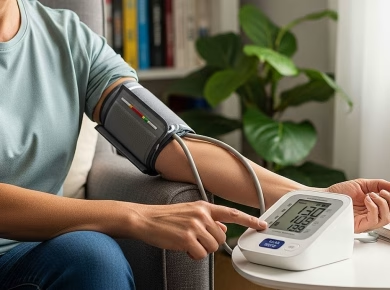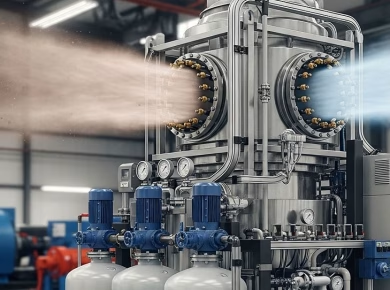If you’re considering a Karcher pressure washer, you’ve probably encountered the frustration of stubborn grime and dirt that just won’t budge—like when you spend hours scrubbing your patio only to find it still looks dingy. After helping countless clients and friends tackle their outdoor cleaning challenges, here’s what actually works when it comes to selecting and using a Karcher pressure washer effectively.
Why Karcher Stands Out in the Pressure Washer Market
Karcher is a name synonymous with quality and innovation in the realm of pressure washers. Established in Germany in 1935, Karcher has become a global leader, renowned for engineering machines that blend power, efficiency, and user-friendliness. Their pressure washers come equipped with features that cater to both residential and commercial needs, making them versatile tools in any cleaning arsenal.
One of the main advantages of Karcher pressure washers is their use of advanced technology. Most models incorporate their patented “Vario Power Spray” (VPS) lance, which allows users to adjust the pressure without changing nozzles, a feature that sets them apart from many competitors. Imagine being able to switch from a high-pressure blast for concrete to a gentle wash for your car seamlessly. This adaptability is crucial for those who need one machine to handle multiple tasks.
Choosing the Right Karcher Model for Your Needs
When selecting a Karcher pressure washer, consider your specific cleaning tasks. Karcher offers a range of models, from compact electric units to powerful gas-powered machines. Here’s how to determine which model is best for you.
Assessing Your Cleaning Needs
If you’re mostly cleaning small areas like patios, decks, or vehicles, an electric model such as the Karcher K5 Premium may be your best bet. It delivers a pressure of 2000 PSI and a flow rate of 1.4 GPM, making it perfect for light to medium tasks. On the other hand, if you’re tackling larger jobs like preparing surfaces for painting or cleaning heavy-duty machinery, a gas-powered model like the Karcher G 3200 XH might be more suitable, providing up to 3200 PSI.
Portability and Storage Considerations
Now, here’s where most buyers get it wrong: they overlook portability and storage. While it’s tempting to go for the most powerful option, consider how you’ll transport and store the machine. Models like the Karcher K2 are lightweight and easy to maneuver, making them excellent for those who need to lug their washer around their property.
How to Use Your Karcher Pressure Washer Effectively
Owning a Karcher pressure washer is just the first step. To maximize its potential, you need to know how to use it properly. Here’s exactly how to get the best results.
Preparation: Setting Up Your Pressure Washer
1. **Gather Your Supplies**: Before you start, ensure you have all necessary supplies. This includes the pressure washer, appropriate detergent (if needed), and safety gear like goggles and gloves.
2. **Connect the Water Supply**: Attach your garden hose to the water inlet on the pressure washer. Ensure the connection is tight to prevent leaks.
3. **Prime the Pump**: Turn on the water and pull the trigger on the spray gun to release any air in the system. This step is crucial for preventing damage to the pump.
Choosing the Right Nozzle
Karcher pressure washers often come with multiple nozzles, each suited for different tasks. Here’s how to choose the right one:
– **0° Nozzle**: Ideal for tough stains on hard surfaces but be cautious as it can damage softer materials.
– **15° Nozzle**: Great for concrete and brick.
– **25° Nozzle**: A versatile option for most cleaning tasks.
– **40° Nozzle**: Best for delicate surfaces like cars and outdoor furniture.
**Warning:** Never use the 0° nozzle on painted surfaces or wood, as it can strip paint and cause splintering.
Using Detergent
For deep cleaning tasks, using detergent can significantly enhance your results. Here’s how to do it right:
1. **Select the Right Detergent**: Karcher offers a range of detergents designed for various surfaces. Always check the label to ensure compatibility.
2. **Attach the Detergent Tank**: Many Karcher models have a built-in detergent tank. Fill it according to the manufacturer’s instructions.
3. **Apply Detergent**: Start with the lowest pressure setting and apply the detergent to the surface. Let it sit for a few minutes to penetrate the grime, but don’t let it dry.
4. **Rinse Thoroughly**: Switch to a higher-pressure nozzle and rinse off the detergent, ensuring no residue remains.
Maintenance Tips for Longevity
To keep your Karcher pressure washer running smoothly for years, regular maintenance is key. Here are some hard-won lessons I’ve learned along the way.
Winterizing Your Pressure Washer
If you live in an area with cold winters, it’s crucial to winterize your pressure washer. Here’s how:
1. **Drain the Water**: Remove hoses and drain any remaining water from the pump and hoses to prevent freezing and cracking.
2. **Use Pump Saver**: Karcher offers a pump saver product that lubricates the pump and protects it during storage.
Regular Cleaning and Inspection
After each use, take a few minutes to clean the nozzle and other components. Clogged nozzles can reduce performance and cause wear on the pump. Regularly inspect hoses for cracks or leaks, and replace them as necessary to maintain optimal function.
Common Issues and Troubleshooting
Even the best machines can encounter issues. Here are some common problems and how to fix them in 2023.
Loss of Pressure
If you notice a drop in pressure, check the following:
1. **Nozzle Clogs**: Remove and clean the nozzle to ensure there’s no blockage.
2. **Hose Kinks**: Inspect the hose for kinks or bends that could restrict water flow.
3. **Water Supply Issues**: Ensure your water source is providing adequate pressure and flow. Sometimes, low water supply can be a simple oversight.
Motor Won’t Start
If your electric Karcher won’t start, follow these steps:
1. **Check Power Source**: Ensure the outlet is functioning. You can test it with another device.
2. **Reset the GFCI**: If the pressure washer is plugged into a GFCI outlet, reset it to eliminate any electrical interruptions.
3. **Inspect the Cord**: Look for signs of wear or damage on the power cord, which may require replacement.
**Warning:** Never attempt to repair internal components unless you’re trained, as this could void your warranty.
Conclusion: The Karcher Advantage
Investing in a Karcher pressure washer means investing in quality, reliability, and performance. Whether you’re tackling seasonal spring cleaning or maintaining your property year-round, the versatility of these machines can handle a wide array of tasks, making them invaluable tools in your cleaning arsenal.
With the right model, proper usage, and regular maintenance, you can turn the hardest cleaning jobs into satisfying, manageable tasks. So, roll up your sleeves and let Karcher take the grunt work out of your outdoor cleaning projects. Your patio, car, and driveway will thank you!



